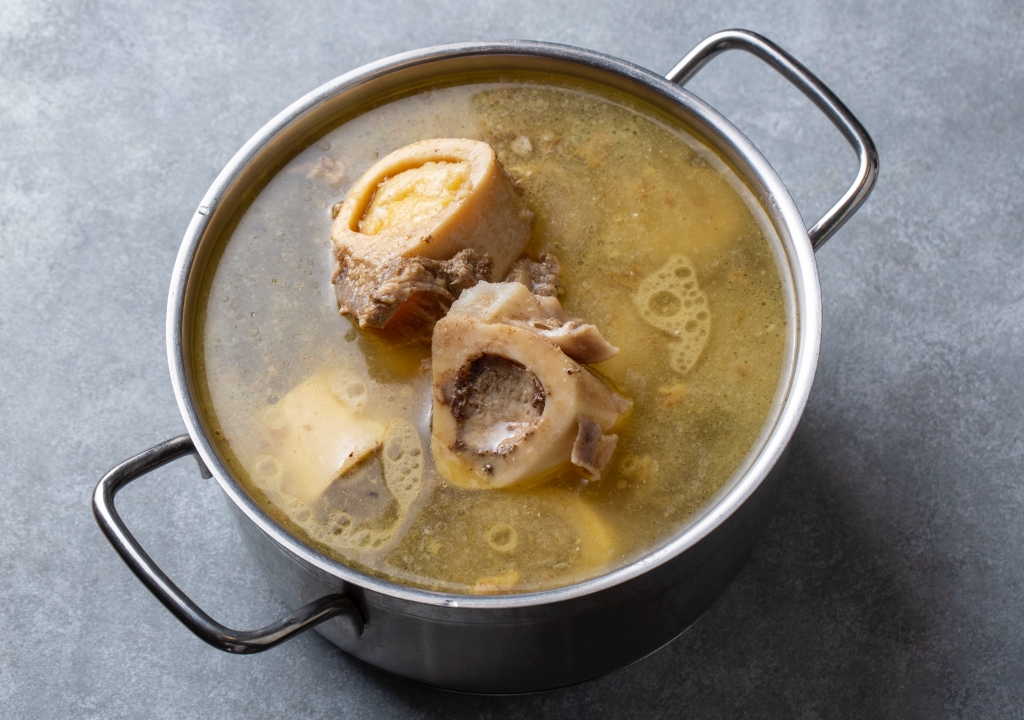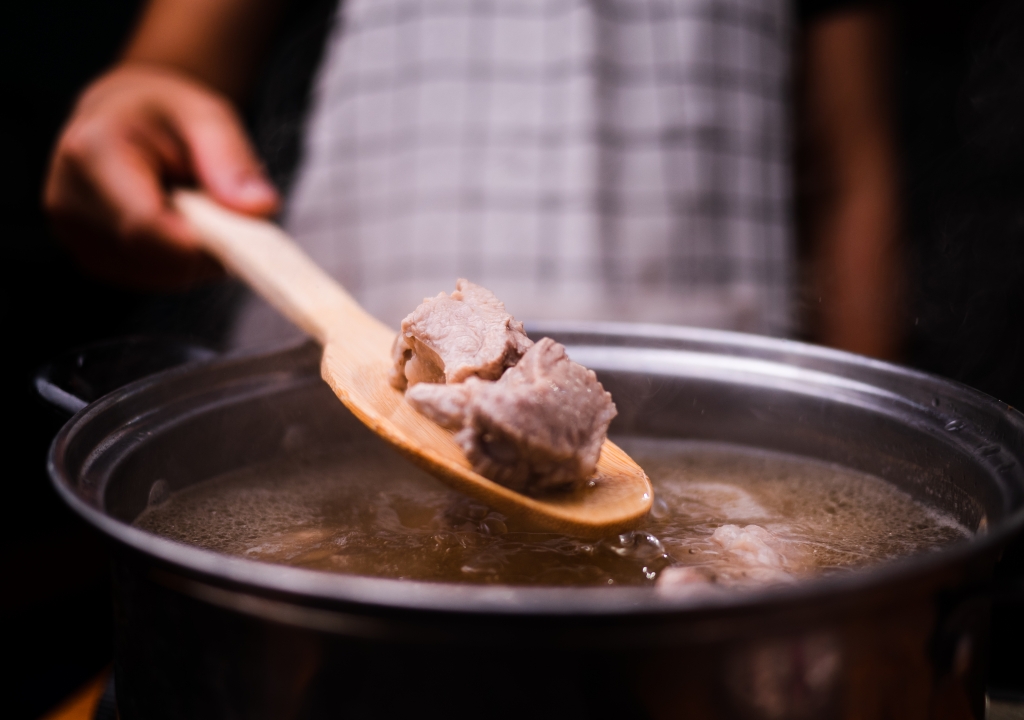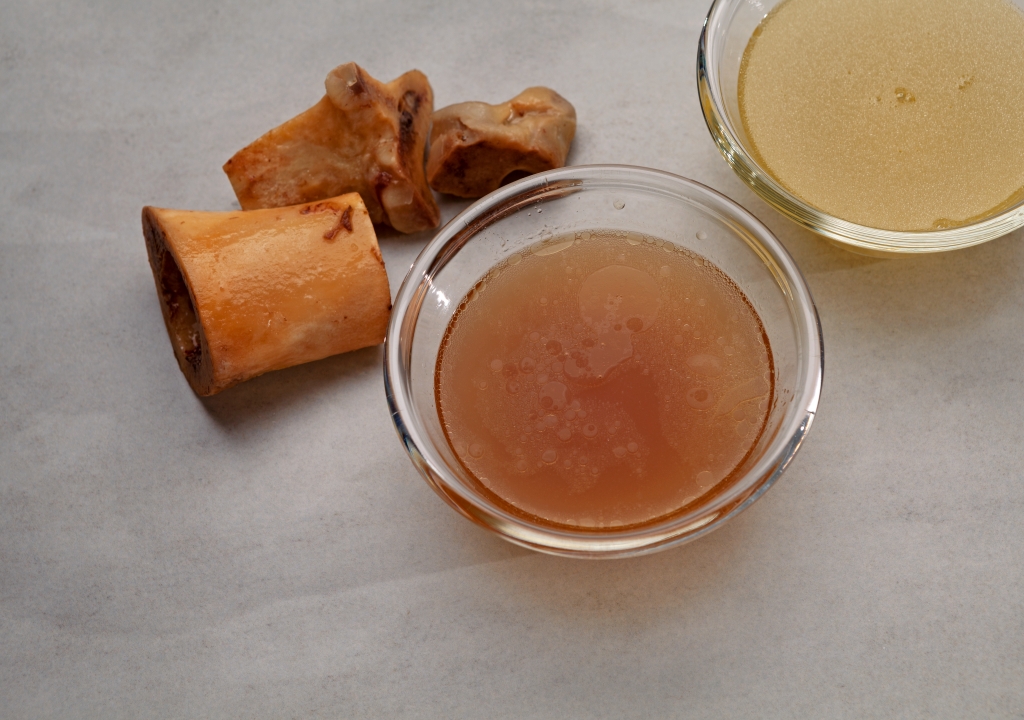Bone broth has quickly become one of the most talked-about natural health remedies—and for good reason. From its ancient roots in traditional cooking to modern-day health trends, it is gaining attention for its powerful nutritional profile and impressive list of potential health benefits. Whether you’re looking to support your joints, improve gut health, aid in weight management, or simply add more nutrients to your diet, bone broth is a simple yet effective choice.

Made by simmering animal bones and connective tissue, bone broth is rich in collagen, gelatin, amino acids, and essential minerals that the body can absorb easily. It’s more than just a trendy soup—this golden liquid can be a nourishing addition to your everyday wellness routine.
In this article, we’ll explore what bone broth really is, how to make it at home, and the science-backed benefits it may offer. Whether you’re new to the concept or looking to deepen your understanding, this guide will walk you through everything you need to know.
What Is Bone Broth?
Why Bone Broth is Essential for Natural Wellness and Healing
It is a nutrient-rich broth made by slowly simmering animal bones and connective tissues in water—usually for 12 to 24 hours or more. The result is a rich, savoury liquid packed with vitamins, minerals, collagen, and amino acids that are easily absorbed by the body. But what makes it so special, and how is it different from regular stock?
Unlike conventional broths or stocks that may simmer for just a few hours and focus mostly on flavour, bone broth is simmered for much longer. This extended cooking time allows the nutrients locked within the bones, marrow, ligaments, and cartilage to be released into the water. The addition of a mild acid like apple cider vinegar helps extract even more minerals, making it an incredibly nutritious and healing drink.
So, what is bone broth exactly, in terms of ingredients? While it can be made using bones from almost any animal—chicken, beef, turkey, fish, lamb, or even pork—the most commonly used are chicken and beef. For the best results, it’s important to use a combination of bones that include marrow bones, knuckles, feet, or necks, as these parts contain the most collagen and connective tissue.
The history of bone broth dates back thousands of years. Ancient cultures around the world, from Asia to Europe, have long relied on broths made from leftover animal parts to provide nourishment, support recovery, and prevent waste. In today’s world, this time-honoured tradition is making a strong comeback—especially among those seeking natural remedies for joint pain, digestive issues, and overall wellness.
What sets this apart is not just its high nutritional content, but also its versatility. You can sip it warm as a soothing beverage, use it as a base for soups and stews, or even add it to sauces, rice dishes, and more. With the right ingredients and preparation method, bone broth can become a staple in any health-conscious kitchen.
In the sections that follow, we’ll look at the nutritional profile and, how it’s made, and why more and more people are turning to this ancient elixir for modern-day health benefits.

Bone Broth Nutrition Facts: What Makes It So Powerful?
Why Bone Broth Should Be Part of Your Diet
When it comes to natural health remedies, few options are as nutritionally dense and widely celebrated as bone broth. But what exactly makes this golden liquid so beneficial? The answer lies in its rich nutritional profile. From essential minerals to skin-boosting collagen, its nutrition supports your body in more ways than one.
1. Collagen and Gelatin
One of the most talked-about benefits of bone broth is its high collagen content. Collagen is a structural protein found in bones, cartilage, and skin. During the simmering process, this collagen breaks down into gelatin, a nutrient that helps support joint health, skin elasticity, and digestive function. The more connective tissue and marrow-rich bones you use—like knuckles, feet, and joints—the higher the collagen content in your broth.
Beef bone broth benefits in particular are often linked to high levels of collagen, making it a popular choice for people looking to support joint and bone strength naturally.
2. Amino Acids
Bone broth is also an excellent source of key amino acids, including glycine, proline, glutamine, and arginine. These amino acids play crucial roles in muscle repair, immune function, gut healing, and reducing inflammation. Glycine, for instance, supports detoxification and has been shown to promote better sleep and brain function.
3. Essential Minerals
The slow simmering process pulls out essential minerals from the bones, such as:
- Calcium – crucial for bone strength
- Magnesium – supports muscle and nerve function
- Phosphorus – needed for energy production
- Potassium – helps regulate blood pressure
- Zinc and Iron – support immunity and oxygen transport
Although the exact amounts can vary depending on the bones used and cooking time, these minerals are delivered in forms that are highly bioavailable—meaning your body can absorb and use them more efficiently.

4. Hydration and Electrolytes
Because bone broth contains sodium and other electrolytes, it also helps maintain proper hydration—especially beneficial when recovering from illness or fasting.
5. Low-Calorie, High-Protein
Despite being low in calories, it is surprisingly satisfying due to its high protein content. A single cup of homemade bone broth can contain anywhere from 6 to 12 grams of protein, depending on how concentrated it is.
Whether you’re sipping it warm from a mug or using it as a base for stews, the nutrition in it makes it one of the best choices for people seeking natural, whole-food nourishment. It’s a simple, ancient solution that provides modern health benefits—without the need for synthetic supplements.
Health Benefits of Bone Broth: Why You Should Add It to Your Daily Routine
The growing popularity of bone broth isn’t just hype—it’s backed by the powerful nutrients it delivers and the variety of ways it supports your health. From gut healing and joint support to better sleep and improved skin, here’s a look at the health benefits that make this humble soup a wellness powerhouse.
1. Can Bone Broth Improve Joint Health?
Absolutely. One of the most well-known benefits is its high collagen and gelatin content—both vital for healthy joints. As the bones simmer, the collagen breaks down into gelatin, which contains amino acids like proline and glycine. These are used by the body to build and maintain connective tissue, cartilage, ligaments, and tendons.
Regular consumption of bone broth for joints may help reduce joint pain, improve flexibility, and support recovery after physical activity. While it’s not a replacement for medical treatments, it’s a nourishing addition to your diet that can contribute to long-term joint health.

2. Does Bone Broth Help Your Gut?
Yes, and this is one of its most powerful uses. Bone broth is easy to digest and may help repair the intestinal lining—especially helpful for people dealing with digestive issues like leaky gut, IBS, or food sensitivities.
The gelatin in this acts like a natural sealant for the gut lining, helping to prevent unwanted substances from leaking into the bloodstream. Additionally, glutamine, an amino acid found, supports the growth and function of intestinal cells.
3. Can Bone Broth Reduce Inflammation?
It contains anti-inflammatory amino acids like glycine and arginine, which have been studied for their role in lowering inflammation levels. Chronic inflammation has been linked to many serious diseases, including arthritis, heart disease, and even cancer.
By adding it to your routine, you’re including a food that may help reduce internal inflammation naturally—especially when it replaces more processed, inflammatory foods.
4. Does Bone Broth Help with Weight Loss?
Surprisingly, yes. it is both filling and low in calories, making it a great option for people trying to manage or lose weight. It’s rich in protein, which promotes satiety, supports muscle maintenance, and helps reduce cravings.
One cup of this for weight loss can serve as a satisfying snack or even a light meal replacement when paired with intermittent fasting or a clean eating plan.
5. Is Bone Broth Good for Your Skin and Hair?
The collagen in the broth doesn’t just support your joints—it’s also essential for skin elasticity, hydration, and healthy hair and nails. Many people report improved skin tone and fewer wrinkles after incorporating it into their diet regularly.
While more research is needed, early studies on collagen supplementation are promising, and it provides it in a natural, food-based form.
6. Can Bone Broth Improve Sleep and Mental Function?
Thanks to glycine, it may also help promote relaxation and better sleep. Research has shown that glycine can improve sleep quality, reduce daytime sleepiness, and even support cognitive function and memory.
Drinking a warm cup before bed might just become your new nightly ritual.
From head to toe—literally—this offers a long list of health benefits. Whether you’re looking to support your digestive system, joints, skin, or simply want a nourishing and natural daily supplement, bone broth is a time-tested remedy that fits modern health goals.
How to Make Bone Broth at Home (Step-by-Step Guide)
One of the best things is that you can make it easily at home with just a few simple ingredients. While store-bought versions are convenient, homemade bone broth gives you full control over the quality of bones used, simmering time, and additional flavourings—all of which directly impact its nutritional value.
If you’re wondering how to make bone broth that’s rich, flavorful, and packed with collagen and nutrients, follow this straightforward guide.
Ingredients for Homemade Bone Broth
To prepare the best bone broth, you’ll need:
- 2–4 pounds of animal bones (chicken, beef, turkey, or mixed)
- Ideal bones: marrow bones, joints, knuckles, feet, necks
- 1 gallon (4 litres) of water
- 2 tablespoons of apple cider vinegar (helps extract minerals from the bones)
- Optional:
- 1 onion (quartered)
- 2 carrots (roughly chopped)
- 2 celery stalks (roughly chopped)
- Garlic cloves, ginger, bay leaves, parsley, peppercorns (for added flavour)
- Salt (to taste)

Directions
Stovetop or Slow Cooker Method (Traditional)
- Prepare the bones
- You can use raw or roasted bones. Roasting adds more depth to the flavour. To roast: bake bones at 200°C (400°F) for 30–40 minutes until browned.
- Combine ingredients
- Place the bones, vinegar, and vegetables in a large pot or slow cooker. Add enough water to cover all the ingredients.
- Bring to a boil, then reduce to a simmer
- Skim off any foam or impurities that rise to the top in the first 30 minutes.
- Simmer gently
- Chicken bones: simmer for 12–18 hours
- Beef or pork bones: 18–24 hours
- Fish bones: only 6–8 hours (due to their delicate nature)
- Strain and store
- Let the broth cool slightly, then strain through a fine mesh sieve. Discard solids.
- Store broth in glass jars or airtight containers in the fridge for up to 4 days or freeze for up to 3 months.
Tips for Better Bone Broth
- Use a mix of bones for maximum collagen extraction. Knuckles and feet are particularly rich in gelatin.
- Add vinegar before boiling to help break down the bones and release nutrients.
- Don’t over-salt during cooking—you can adjust seasoning when serving.
- For a clearer broth, avoid stirring during simmering and don’t boil vigorously.
- The broth should gel when cooled—that’s a sign of good gelatin content!
Alternative: Instant Pot Bone Broth
Pressed for time? The Instant Pot or a pressure cooker is a great way to make bone broth in a fraction of the time—typically 2–3 hours for the same nutrient yield.
How to Use Bone Broth
Besides sipping it warm like a tea, bone broth is incredibly versatile:
- Use it as a base for soups and stews
- Add to gravies, sauces, or curries for depth
- Use in place of water when cooking rice or quinoa
- Freeze in ice cube trays for quick seasoning additions
Making it at home allows you to fully customise flavour and nutrition. Once you get into the habit, it becomes a satisfying routine that supports your health, saves money, and reduces kitchen waste.
Tips to Get the Most Out of Bone Broth

Whether you’re making it fresh or buying it ready-made, using it correctly can significantly boost the benefits you receive. To ensure you’re maximising both the nutritional value and convenience of this superfood, here are essential tips on sourcing, storing, and consuming it as part of your daily routine.
1. Where to Get Good Quality Bones for Bone Broth
To get the best bone broth, the quality of your ingredients matters—especially the bones.
Options for sourcing bones:
- Butcher shops: Ask for marrow bones, oxtail, knuckles, or chicken feet. Many butchers will give these at low cost—or even free.
- Farmers’ markets: Ideal for grass-fed, organic bones free from hormones and antibiotics.
- Grocery store: Look for bone-in cuts like chicken thighs, turkey necks, or soup bones in the frozen section.
- Leftovers: Save bones from roasts, rotisserie chickens, or T-bone steaks. Store them in the freezer until you have enough.
Pro Tip: Using a combination of marrow bones, joint bones, and meaty bones creates a richer, more gelatinous broth that’s both flavourful and nutrient-dense.
2. How to Store Bone Broth Properly
Proper storage keeps your bone broth fresh and safe for longer, so you can enjoy it every day without extra hassle.
Short-term storage:
- In the fridge: Store cooled broth in glass jars or airtight containers for up to 4–5 days.
Long-term storage:
- Freeze in portions: Use BPA-free containers or pour into ice cube trays to freeze and use small amounts as needed.
- Label containers with the date: Bone broth lasts up to 3 months in the freezer.
To reheat:
- Always reheat gently over low heat to preserve nutrients.
- Avoid boiling reheated broth, as it may break down beneficial proteins.
3. How Often Should You Drink Bone Broth?
One of the most common questions is: “How much bone broth should I drink per day?”
Recommended intake:
- 1 to 2 cups per day is ideal for consistent health benefits.
- Drink warm bone broth in the morning, before meals, or before bed.
- For digestive issues or joint support, daily intake is more effective than occasional use.
4. Creative Ways to Include Bone Broth in Your Diet
Drinking bone broth daily doesn’t mean you need to sip it plain every time. There are many ways to incorporate it into meals and snacks.
Try these ideas:
- Add to soups, stews, and chilli for a nutrition boost.
- Use instead of water when cooking rice, quinoa, lentils, or couscous.
- Make bone broth smoothies using cooled broth, especially in savoury blends.
- Create healing drinks with turmeric, black pepper, and lemon.
- Use broth as a base for healthy gravies or pan sauces.
5. Should You Buy Bone Broth or Make It at Home?
While homemade bone broth is the gold standard, not everyone has 24 hours to simmer a pot.
If buying:
- Choose organic, grass-fed, or pasture-raised products.
- Look for no added preservatives, sugar, or artificial flavours.
- Pick a product that gels when cold—that’s a sign of real collagen content.
Popular formats include:
- Shelf-stable cartons (check labels for real bone content)
- Frozen bone broth (usually higher quality)
- Bone broth protein powders (quick but not as bioavailable)
6. Bone Broth for Specific Needs
Bone broth isn’t just general wellness—it can be tailored for targeted support.
| Goal | How to Use Bone Broth |
| Joint Health | Sip 1–2 cups daily or add collagen-rich cuts like feet and knuckles |
| Gut Healing | Use on an empty stomach with ginger or turmeric |
| Weight Loss | Replace one meal a day with bone broth-based soups |
| Skin & Hair | Pair broth with a vitamin C-rich diet to boost collagen absorption |
| Better Sleep | Drink a warm cup of broth with sea salt 1 hour before bed |
Incorporating bone broth into your routine isn’t just about drinking a cup now and then—it’s about using it intentionally, consistently, and creatively. Whether you make it from scratch or buy it from a trusted brand, it’s one of the simplest and most effective ways to support your body, naturally.
Bone Broth Powder vs. Homemade – Which Is Better?
If you’ve heard about the benefits of bone broth but don’t always have the time to simmer a pot for 24 hours, you might be considering bone broth powder. But how does it stack up against the real thing? Is powdered broth just as effective—or are you missing out?
In this section, we’ll break down the differences between homemade bone broth and bone broth supplements so you can decide which is best for your lifestyle and health goals.
What Is Bone Broth Powder?
Bone broth powder is a concentrated supplement made by dehydrating liquid bone broth into a fine, shelf-stable powder. It typically comes from chicken or beef bones, and is promoted for its convenience and portability.
You can mix it with warm water, add it to smoothies, or blend it into recipes just like the real thing—only faster.
Common formats:
- Unflavoured bone broth protein (ideal for cooking)
- Flavoured varieties like chocolate, vanilla, turmeric, or greens
- Collagen-boosted powders with added vitamins or adaptogens
Nutritional Comparison: Powdered vs. Homemade Bone Broth
| Feature | Homemade Bone Broth | Bone Broth Powder |
| Collagen Content | High (varies by recipe and bones used) | Moderate to High (depends on brand and quality) |
| Amino Acids | Full spectrum from whole bones and connective tissue | Often concentrated but can vary greatly |
| Minerals | Natural source of calcium, magnesium, phosphorus, and potassium | May lack trace minerals depending on processing |
| Additives | None if homemade | May contain sweeteners, flavours, or fillers |
| Bioavailability | Excellent (food-based, slow-cooked) | Good, but slightly lower depending on heat processing |
| Cost | Very affordable | More expensive per serving |
Pros and Cons of Bone Broth Powder
✅ Advantages:
- Convenient and portable – perfect for travel, work, or gym bags
- No cooking required – ready in seconds
- Long shelf life
- Easier to measure exact servings
Drawbacks:
- Can be expensive, especially high-quality brands
- Nutrient content may be lower or inconsistent
- Some powders contain added sodium, artificial flavours, or preservatives
- Less gelatinous texture, which may reduce gut-healing effects
Is Bone Broth Powder a Good Alternative?
Yes—especially if you’re short on time. For people who travel frequently, follow a high-protein diet, or want to support joint health or collagen intake, bone broth powder offers a practical, mess-free option.
However, it’s not a perfect substitute. Homemade bone broth provides a broader range of nutrients, a richer taste, and full control over ingredients. It’s also more likely to contain naturally occurring minerals and a higher gelatin content, which is beneficial for gut and skin health.
If you’re dealing with specific issues like leaky gut, chronic inflammation, or arthritis, homemade broth may offer stronger therapeutic benefits.
What to Look for in a Quality Bone Broth Supplement
If you choose to go the powdered route, make sure you:
- Check the ingredient list – no fillers, artificial flavours, or added sugars
- Choose grass-fed, pasture-raised, or organic sources
- Look for third-party testing to ensure quality and safety
- Prefer brands that mention “slow-simmered” extraction (this mimics traditional methods)
Final Verdict: Which One Should You Choose?
| If you… | Choose This Option |
| Want the most nutrients and don’t mind waiting | Homemade Bone Broth |
| Have a busy schedule and need convenience | Bone Broth Powder |
| Are on a budget and want daily intake | Make your own broth in bulk and freeze it |
| Need a protein boost on-the-go | High-quality bone broth supplement |
Both options have their place. Ideally, you can rotate between homemade bone broth and powdered versions depending on your lifestyle. Either way, you’ll still enjoy many of the incredible health benefits this ancient remedy has to offer.
Frequently Asked Questions About Bone Broth
As it continues to gain popularity, people are asking important questions about how to use it, how much to consume, and what benefits it truly offers. Here are some of the most frequently asked questions—along with clear, evidence-based answers.

1. How Often Should You Drink Bone Broth?
There’s no one-size-fits-all answer, but many health experts recommend drinking 1 to 2 cups per day to experience its full benefits. This routine supports everything from joint health to gut repair.
For beginners, even a few servings a week can make a noticeable difference. Consistency is key—just like with any nutritional change, the more regular your intake, the better your results.
2. Can Bone Broth Help You Lose Weight?
Yes, it can be a helpful addition to a weight loss plan. It’s low in calories but high in protein, which helps curb hunger and keeps you feeling full longer. The presence of collagen and gelatin also promotes satiety while supporting muscle tone during weight loss.
Some people use fasting days as part of intermittent fasting. However, it should be paired with a healthy diet—not used as a sole solution.
3. Does Bone Broth Really Contain Collagen?
Absolutely. One of the key benefits is its collagen content, which is extracted from the bones and connective tissues during the simmering process. When cooked, this collagen breaks down into gelatin, which is rich in amino acids that support:
- Joint repair
- Skin hydration and elasticity
- Gut lining health
- Bone strength
Though not as concentrated as a collagen supplement, bone broth collagen is natural and easily absorbed.
4. Is Bone Broth Safe for Everyone?
For most people, it is completely safe when made with high-quality bones and ingredients. However, some sensitive individuals may experience:
- Mild digestive discomfort (especially if histamine-sensitive)
- Reactions to additives in store-bought bone broth or powders
To avoid risks:
- Use organic, grass-fed, hormone-free bones
- Store and reheat broth properly
- Start with small portions if you have food sensitivities
5. Can You Drink Bone Broth on an Empty Stomach?
Yes, and in fact, drinking it on an empty stomach can be especially soothing for the gut. Many people with digestive issues, such as bloating, IBS, or leaky gut, find that sipping a cup of warm broth first thing in the morning helps calm inflammation and promote digestion throughout the day.

6. Is Bone Broth Just Another Name for Stock?
Not exactly. While bone broth, stock, and broth are similar, there are key differences:
| Type | Simmer Time | Main Ingredient | Purpose |
| Broth | 1–2 hours | Meat | Flavouring |
| Stock | 4–6 hours | Bones (light simmer) | Cooking base |
| Bone Broth | 12–24+ hours | Bones + connective tissue | Nutritional & therapeutic use |
Bone broth is unique because of its extended cooking time, which extracts collagen, gelatin, and minerals that traditional broth or stock does not.
7. Can You Give Bone Broth to Kids or Pets?
Yes, it is safe for children and pets—when made without excess salt, onions, or garlic (which can be toxic to pets). It can be a nourishing addition to a child’s meal or a great hydration booster for older dogs and cats.
Always introduce it in small amounts first and consult your vet for pet-specific guidelines.
8. What If My Bone Broth Doesn’t Gel? Is It Still Healthy?
Yes! While a good gel indicates high gelatin content (which is great for joints and gut health), even non-gelled still contains valuable nutrients like amino acids, trace minerals, and collagen fragments.
To encourage gelling:
- Use joint bones like chicken feet or beef knuckles
- Simmer longer
- Avoid adding too much water
9. Can Bone Broth Replace a Meal?
It can serve as a light meal replacement, especially during detox or fasting phases. It provides protein and electrolytes, but it lacks carbs and fat needed for a balanced long-term meal. For full meals, pair it with veggies, lean proteins, or healthy fats.
10. How Should You Store and Reheat Bone Broth?
- Refrigerate in airtight glass containers for up to 4–5 days
- Freeze in batches for 2–3 months
- Reheat gently on low heat—never reboil after storing
Proper storage keeps your bone broth fresh, potent, and safe to consume daily. also learn how to lower blood sugar naturally
This FAQ section is just the beginning. As more people explore the healing power of bone broth, new questions continue to arise. But the bottom line remains the same—when sourced, stored, and consumed correctly, it is a powerful, natural ally in your wellness routine.
The Bottom Line: Is Bone Broth Worth Adding to Your Diet?
There’s a reason it has stood the test of time—across centuries and cultures—as a trusted remedy for wellness. Whether you’re sipping it to ease digestion, soothe sore joints, improve sleep, or simply boost your nutrient intake, this collagen-rich, gut-friendly broth brings serious value to the table.
It’s not just soup—it’s a functional food packed with bioavailable nutrients, from amino acids and minerals to naturally occurring gelatin and collagen. And with both homemade and high-quality powders readily available, there’s a version that fits every lifestyle.
You don’t need to drink litres of it daily. Even a cup a day can provide steady, long-term support for your joints, gut, skin, and immune system. Plus, it’s a natural way to fill nutritional gaps without relying on synthetic supplements.
So, is it worth the effort or investment? Absolutely. Especially when you’re looking for a wholesome, time-tested, and nutrient-dense boost to your diet.
Disclaimer: This article is for informational purposes only. It does not substitute medical advice. Please consult your healthcare provider before making significant dietary changes, especially if you have underlying health conditions.
💬 Found this guide useful?
If yes, please share it with someone who needs a natural health boost, and don’t forget to:
- ✅ Like this post
- ✅ Comment your bone broth questions or recipes
- ✅ Subscribe to our newsletter for more nature-powered wellness
- ✅ Follow Remedyu for weekly updates on healing foods and natural remedies
NHS has a good guide for bone health for people above 65